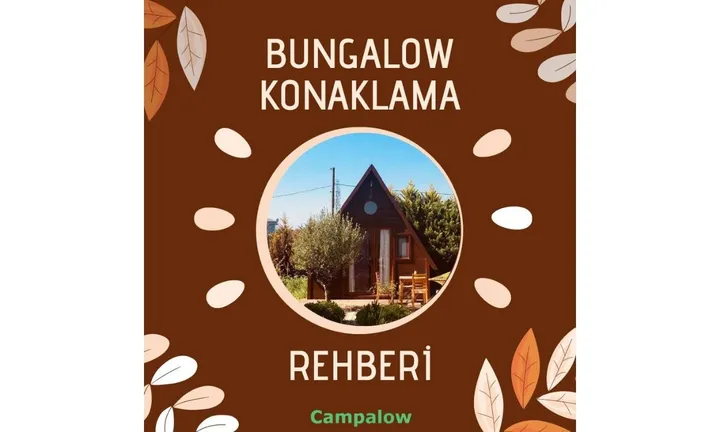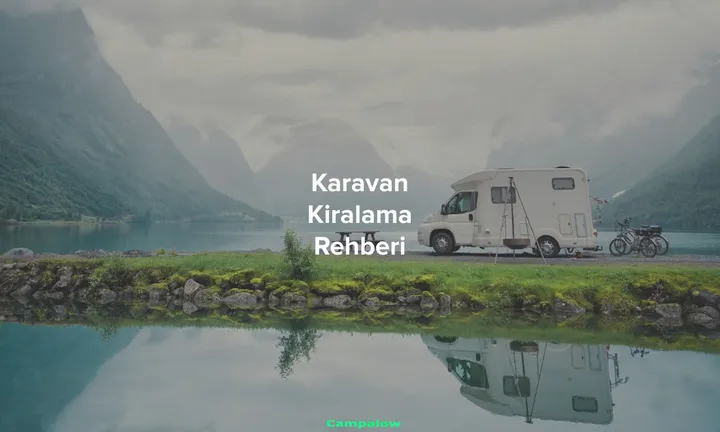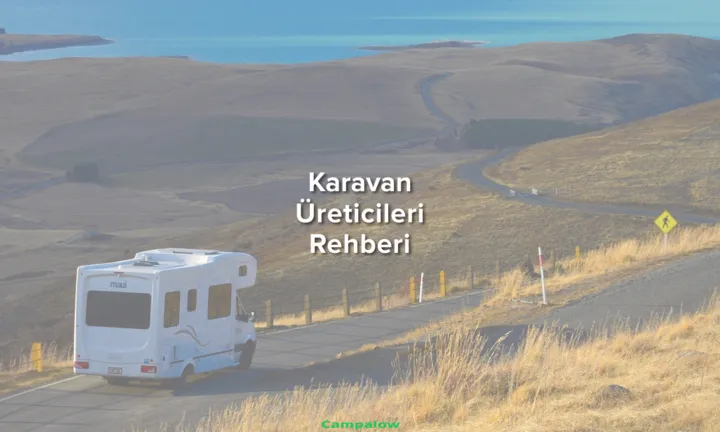Bungalow accommodation guide
In the bungalow accommodation guide; We touched on the features of the houses, the types of bungalows produced in different ways and the general price ranges.

As well as the need for freedom in camping, the desires based on comfort are also found in a corner of the mind. Especially when we are not away from business life and daily life, we go after the camps that will give you the comfort of home. This is exactly where the bungalow camp draws attention with its comfortable structure, minimal design and hygienic foundation. Regardless of the season, bungalow structures that promise home comfort in camping activity are popular, as well as bungalow types, accommodation advantages and current accommodation prices.
What is a Bungalow?
Adapted under the leadership of the single-storey structures of India in the 19th century, bungalow houses are built in the Bengal region for British officers during the British colonial occupation. During the occupation, British officers hired local workers to build more affordable, small one-story houses called Bangla (or Bangala) meaning "Belonging to Bengal". Bungalow houses were designed in a very sheltered way in order to be protective against unbearable heat in the Indian lands of the period. Bungalow buildings, which emerged as a continuation of a military process in the past, became the dominant architectural figure of the United States, especially in the 1900s. Over time, it became widespread all over the world and became the favorite architectural figure of developed countries such as Turkey.
Mini and sympathetic residences that enable the comfort to be felt within the borders of the house to be found in the depths of nature are called bungalows. The small houses in question differ from each other in terms of their design and possibilities. Bungalow houses, which are designed within the framework of various architectural perspectives and started to be used in the world, are generally preferred to spend an isolated time in nature, away from the noise of the city. In this case, one should not be surprised at the unstoppable popularity of structures that offer comfort, home facilities and silence.
What are the types of bungalows?
Today, there are 6 types of bungalows produced in different architectural styles. The structures in question are distinguished from each other in terms of features such as size, window structure, sill feature and roof views. Accordingly, bungalow types; Craftsman is split into California, Chicago, Mission, Tudor, and Prairie.
- Craftsman Bungalow: The term Craftsman Bungalow is used to describe minimal structures built in a classical style. The houses in question have a tiled roof and an overhanging roof section.
- California Bungalow: Single storey bungalow style is called “California”. An open floor plan, sloping and overhanging structure dominates in these houses. Plaster and wood materials are often used instead of bricks to build California bungalow houses. With this feature, it differs from the types of houses in which brick is used in its infrastructure. Pioneered by architects Charles Sumner Greene and Henry Mathis Greene, the California bungalow homes were produced in accordance with the climate of Southern California.
- Chicago Bungalow: Chicago bungalow houses, which usually have a rectangular structure, have a basement. The staircase entrance of the buildings, which consist of one and a half floors above the basement floor, is located on the side of the houses. It is also possible to come across a roof window and a closed front room in Chicago models, which can be accessed from the street level by stairs to the veranda.
- Mission Bungalow: Wide overhanging eaves and exposed beams dominate the Mission-style bungalows. Houses of this type are usually produced in the form of a gable roof. Moreover, it is possible to see plain plaster or plastic siding in Mission style buildings. There are also models with a Spanish-style tiled roof.
- Tudor Bungalow: Contrary to a traditional bungalow type, Tudor bungalow houses are dominated by eye-catching designs such as detailed doors, chimneys and wall coverings. It is possible to come across steep-pitched gabled roofs and half-timbered, long and narrow windows in Tudor buildings, which reduce the medieval architectural design to the simplicity of bungalows.
- Prairie Bungalow: Developed under the leadership of a group of Chicago architects from Prairie School (including its member Frank Lloyd Wright), Prairie bungalow homes feature straight chimneys, contrasting wall materials and Prairie-style window patterns to support the roof.
Bungalow houses are divided into different qualities according to the building material, roof model and floor characteristics. Today, it is possible to come across Mission and Chicago models in the architecture of bungalow houses preferred by campers in all seasons.
What are the Bungalow Features?
Bungalow houses are preferred intensely thanks to the maximum comfort they offer to holidaymakers in nature. In addition to comfort, these structures are loved by features such as minimal size, interesting design, practical use and balance. The main features of the attractive bungalow houses, which are becoming more popular day by day, are listed as minimal size, stability, eaves front slope, windows and open floor plans.
- Minimal Size: Attractive bungalow structures usually have a single storey minimal structure. In addition, in buildings with different types of architectural features, there may be foundations that are one or one and a half stories above the basement. The biggest factor that makes such buildings attract more and more attention day by day with their minimal size may be the idea that evokes simplicity and a return to nature.
- Balance: One of the most important features of a bungalow house is that it can stand in balance. Even if the front of a house is not symmetrical, it needs to be built on a certain balance. For example, even though the Craftsman bungalow's porch is not in a closed structure, the square support columns provide stability.
- Eaved Front Slope: One of the most basic features that distinguishes these types of buildings from classical houses is a roof covered patio section located on the eaved front slope.
- Windows: Regardless of the form or architectural understanding, it is inevitable for bungalow houses to have many windows that will let the sun into them.
- Open Floor Plans: Rooms connected by a corridor in classical houses do not need a connection thanks to the open floor plan of bungalow structures. Therefore, it is possible to switch from room to room. This makes the houses more comfortable and practical than they seem.
Current Bungalow Price Comparison
As in every sector, current prices in bungalow camping are examined in three different time periods as normal, active and low. The regular camping season starts from May and continues until October. The active period generally covers the months of July-September, when the weather warms up and the holiday season begins. On the other hand, the low season is October-April, when the weather gradually cools and leaves its place to the traces of autumn. At the same time, bungalow accommodation prices vary according to the service and size of the house. Let's evaluate through examples:
Kaş Joy Glamping Bungalow Accommodation Fees (2 Persons)
- May/June/October : 1150 TL
- July August September : 1250 TL
- Low Season : 750 TL
According to the bungalow price samples taken from the Sahil Kamp Istanbul facility, services such as Orman Koza Bungalow type bedding, pillows, heaters and lighting are offered at an average price of 700 TL. Likewise, there is a Wooden House Bungalow option, where more comprehensive services are offered for 1700 TL. You can evaluate our "Bungalow Camping Areas" guide, which we have organized as Campalow, to take a look at different bungalow types and services in various camping facilities. We wish you a good holiday in advance.


